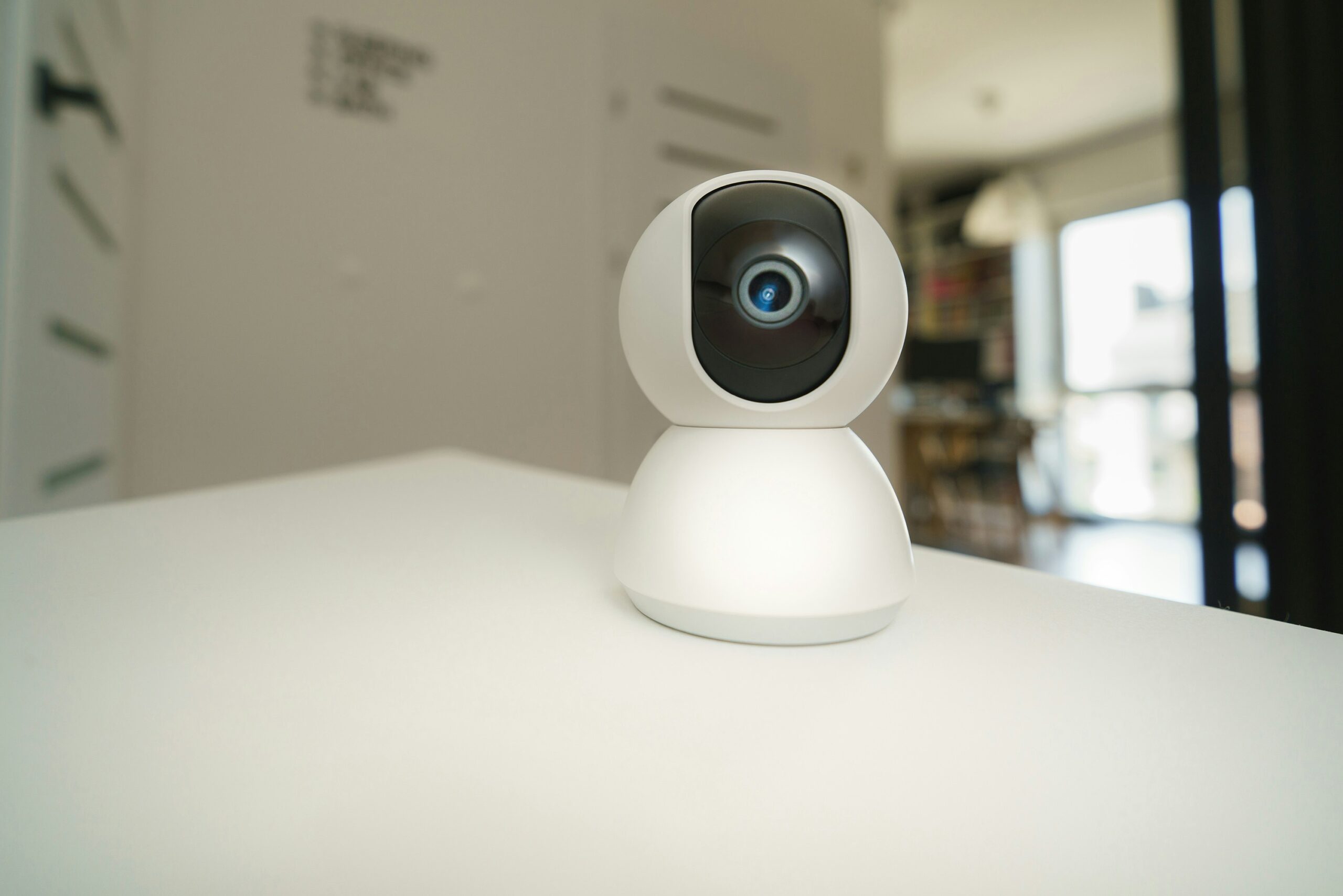30 seconds summary
- Smart surveillance solutions enhance home security by integrating AI-powered cameras, motion sensors, and mobile connectivity.
- These systems offer real-time alerts, remote monitoring, and facial or object recognition to detect unusual activity.
- Cloud storage and encrypted data ensure safety, while automation links with smart locks and lighting to deter intruders providing homeowners with 24/7 intelligent protection and peace of mind.
In an era of rising security concerns, evolving lifestyles, and rapid advances in home automation, creating a safe and smart home has never been more vital. Today’s homeowners expect security systems that go beyond intrusion detection to offer intelligent integration, adaptability, and reliability. A standout innovation in this field is the solar powered security camera, which fuses surveillance, wireless connectivity, renewable energy, and AI-driven analytics. Smart surveillance solutions like these enhance home security through real-time monitoring, seamless smart-home integration, and sustainable, always-on protection.
What is a Solar-Powered Security Camera & How It Works
At its core, a solar-powered security camera is a surveillance camera system that draws at least a portion of its operating power from a solar panel (photovoltaic cells), rather than relying solely on mains electricity or wiring. Typically, the system comprises three major components:
- Solar panel (or panels): The solar panel captures sunlight and converts it into electrical energy (via photovoltaic effect).
- Rechargeable battery / energy storage: The energy generated by the solar panel is stored in a battery (often lithium-ion or similar) so that the camera can continue operating during periods without direct sunlight (night, shading, cloudy weather).
- Camera & connectivity module: The actual surveillance camera (often with motion sensors, video capture, night-vision features) plus a connectivity module (WiFi, sometimes cellular/LTE) that sends alerts, stores footage (local or cloud), and allows remote access.
The Operating Process
Here’s a simplified breakdown of operation:
- During daylight hours, the solar panel receives sunlight and generates electricity. Some of this power is used immediately to run the camera, while excess power is used to charge the battery.
- At night or when sunlight is insufficient, the camera draws power from the battery. This ensures continuous operation.
- The camera is linked to a home network (WiFi or sometimes cellular). It monitors motion, records video (either locally on SD card or sent to cloud), and sends remote alerts (push notifications, email) when relevant events are detected.
- Because of the independence from mains wiring (or minimal wiring), the camera may be installed in more flexible locations.
Why Solar?
The use of solar power brings several meaningful advantages: energy independence (especially in areas with unreliable mains supply), flexibility of placement (no need for nearby power outlets or wiring), and environmental sustainability (reducing reliance on grid electricity).
Why Smart Surveillance with Solar-Powered Cameras Enhances Home Security
Using smart surveillance solutions with solar-powered cameras offers a number of benefits that when properly leveraged—can significantly enhance home security across multiple dimensions.
1. Installation Flexibility & Coverage
Traditional wired security cameras require power outlets (or wiring) and sometimes professional installation/trenching. Solar-powered systems relax those constraints: you’re not tied to a plug location. This means you can place cameras in optimal vantage points (roof eaves, remote corners of yard, detached structures) rather than only near a power socket.
This flexibility translates into improved coverage: you can monitor blind spots, detached garages, perimeter fences, yards, etc., effectively closing otherwise uncovered vulnerabilities.
2. Resilience & Independence from Grid Outages
In the event of a power outage (due to weather, grid failure, tampering by intruders, etc.), a solar-powered camera with battery backup continues to operate. That means when security risks may be elevated (during storms, power failures), the camera remains active.
Further, for homes in areas where running power to a remote zone is expensive or impractical (e.g., guest houses, detached sheds, rural properties), solar-powered surveillance offers a viable path where mains power would be prohibitive.
3. Cost & Sustainability Benefits
While the upfront cost of solar-powered systems may be somewhat higher than conventional wired cameras, the long-term savings in electricity consumption, wiring/trenching, and easier installation can offset this. Many homeowners appreciate the reduced ongoing costs and environmental footprint.
Because they harness renewable energy, these systems also align with sustainability goals. That can resonate with homeowners who value green choices, and may contribute to property appeal too.
4. Smart Features & Modern Surveillance Capabilities
Modern solar-powered security cameras aren’t just about power—they incorporate advanced smart features: motion detection (often AI-based to distinguish people/vehicles/pets), remote mobile access, cloud/local storage, integration with voice assistants and smart home ecosystems.
These smart features improve effectiveness:
- Real-time alerts let you respond quicker.
- Two-way audio (on many models) lets you speak through the camera (deterring intruders).
- Night-vision, wide angle or pan/tilt features enhance coverage.
- Smart analytics reduce false alarms (tree branches vs human intrusion).
Hence, you get more than just a “camera on a wall”; you get an integrated security device that works smarter, not just harder.
5. Scalability & Integration into Smart Home Security Ecosystem
Solar-powered cameras can be integrated into a broader smart home security system (smart locks, smart lights, motion sensors, alarm systems). That means you can build an ecosystem: motion detected → camera triggers → lights turn on → alert sent to homeowner/call-centre.
This integration means your home security shifts from passive “record only” to proactive “detect-deter-respond”. Solar power gives you flexibility to place devices optimally and link them into the ecosystem without wiring constraints.
Key Considerations When Choosing & Deploying Solar-Powered Security Cameras
To make the most of solar-powered surveillance, you need to understand certain important factors and plan accordingly. Here are the key considerations.
Power / Solar Panel & Battery Specifications
- Solar panel wattage/efficiency: In locations with less sunlight or heavily shaded areas, you’ll need solar panels with sufficient output and efficient battery storage.
- Battery capacity and durability: Battery size determines how many days the camera can run without sunlight, and how long until the battery itself must be replaced. Many high-quality units can run multiple days in cloudy weather.
- Sunlight exposure & panel placement: Ideal mounting where the panel receives direct sunlight for several hours a day (e.g., 4-6+ hours in many cases). Avoid shading from trees/root structures. Some panels need seasonal angle adjustments.
Connectivity & Storage Requirements
- WiFi vs cellular (LTE/4G) connectivity: Most home installations use WiFi; remote or rural installations may need cellular options. Note: distance from WiFi router, signal strength, and bandwidth matter.
- Local storage vs cloud storage: Some cameras store footage on SD cards (local), others upload to the cloud (subscription-based). Choose based on preferences for privacy, cost, and accessibility.
- Smart home ecosystem integration: Ensure compatibility with your existing smart home platform (e.g., Amazon Alexa, Google Home, Apple HomeKit) if you plan to integrate.
Video Quality & Surveillance Features
- Resolution: Higher resolution (1080p, 2K, 4K) helps identify faces, license plates, details. But higher resolution demands more power/ bandwidth.
- Field of view / lens angle / pan-tilt-zoom: Wider field of view or PTZ (pan-tilt-zoom) options reduce the number of cameras needed to cover a given area.
- Night vision & lighting features: Ensures effective surveillance in low-light/dark conditions. IR night-vision or full-colour night mode, sometimes with spotlight.
- Motion detection & alerts: Smart sensors (including AI) reduce false triggers and improve accuracy (human vs pet vs vehicle).
Weatherproofing & Durability
Outdoor installations must resist rain, dust, temperature extremes, UV exposure. Check IP rating (IP65, IP66, IP67) and material durability.
Installation & Maintenance
- Mounting location: Optimal panel placement, avoid shadows, consider orientation (south-facing in Northern Hemisphere).
- Panel cleaning / upkeep: Dirt, leaves, snow can reduce solar panel efficiency. Occasional maintenance ensures reliability.
- Battery replacement & system lifespan: Batteries degrade over time (typically 2-5 years) and will need replacement. The panels themselves may last 10+ years.
- Firmware / software updates: Smart cameras require updates (for connectivity, security patches) as part of maintenance.
Limitations & Mitigations
While solar-powered smart surveillance has many advantages, you must be aware of potential drawbacks and plan mitigation:
- Sunlight dependency: In shaded areas, heavily overcast climates, or winter months with short daylight, charging may be limited. This could reduce performance or require larger panels/batteries.
- Upfront cost: Higher initial cost than basic wired cameras due to solar panel + battery. But long-term ROI should be considered.
- Connectivity constraints: If the camera relies on WiFi but is placed far away from the router, the signal may be weak.
- Charging interruptions: Trees, seasonal changes, snow, debris—any shading of the solar panel can reduce charging. Maintenance and planning needed.
- Limited continuous recording: Some battery/solar cameras optimize for event recording (motion triggers) rather than 24/7 continuous recording, as the latter consumes more power.
Designing a Smart Surveillance Strategy with Solar-Powered Cameras
To maximize the benefits of solar-powered surveillance and embed it in a smart home security strategy, the following steps and best practices can help.
Step 1: Security Audit & Coverage Plan
Begin by assessing your property and identifying vulnerabilities: entry points (doors, windows), blind spots (sides/back of house), detached structures (garage, shed), perimeter (fence, driveway). For each area ask: is there a power outlet nearby? Is the WiFi signal strong? Is there direct sunlight?
Map out how many cameras you need and where they should go for optimal coverage. Solar-powered units give flexibility for mounting in places without wiring constraints.
Step 2: Choose Appropriate Camera Models
Based on your coverage plan, select solar-powered security camera models that meet your requirements. Key criteria:
- Sufficient resolution to capture needed detail (face, license plate).
- Smart motion detection features.
- Battery capacity and solar panel wattage to ensure reliable operation in your climate and mount location.
- Compatibility with your smart home ecosystem and connectivity (WiFi/cellular).
- Weather resistance and build quality.
Step 3: Placement & Orientation
For each camera, choose a spot where:
- The solar panel receives ample direct or strong indirect sunlight (ideally 4-6+ hours daily, more if partial shading).
- The camera (lens) has a clear view of the target area (entrance, yard, driveway) and is angled to avoid direct sun glare, reflections, or areas where shadows dominate.
- WiFi or cellular connectivity is robust (test signal).
- Panel cables (if separate) can be routed safely and discreetly.
- Avoid mounting too low (vandal risk) or too high (capture detail decreases).
Step 4: Network & Smart Home Integration
Set up connectivity: connect the camera to your home WiFi or set up a dedicated WiFi extender/mesh node if needed. Configure the software: mobile app, cloud or local storage, alerts, activity zones, motion sensitivity. Integrate the camera into your smart home system: e.g., link to a smart lock so that motion at the front door activates light or triggers a door-lock check; link to smart lights so when motion is detected the lights come on and camera starts recording.
Conclusion
Smart surveillance is a vital component of modern home security. When combined with solar power, surveillance systems gain flexibility, resilience, sustainability, and the potential for deeper integration into smart home ecosystems. Solar-powered security cameras allow homeowners to cover areas that were previously difficult or expensive to monitor; they perform even when the mains power fails; they align with sustainable living; and they bring smart analytics and remote access features that make them far more than simple video recorders.
Of course, the technology is not a magic bullet: proper planning, placement, connectivity, power-management, and system maintenance are key to achieving reliable performance. But when done right, solar-powered smart surveillance becomes a cornerstone of a home security strategy: one that detects intruders, deters threats, and empowers homeowners all while harnessing renewable energy.


